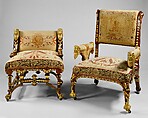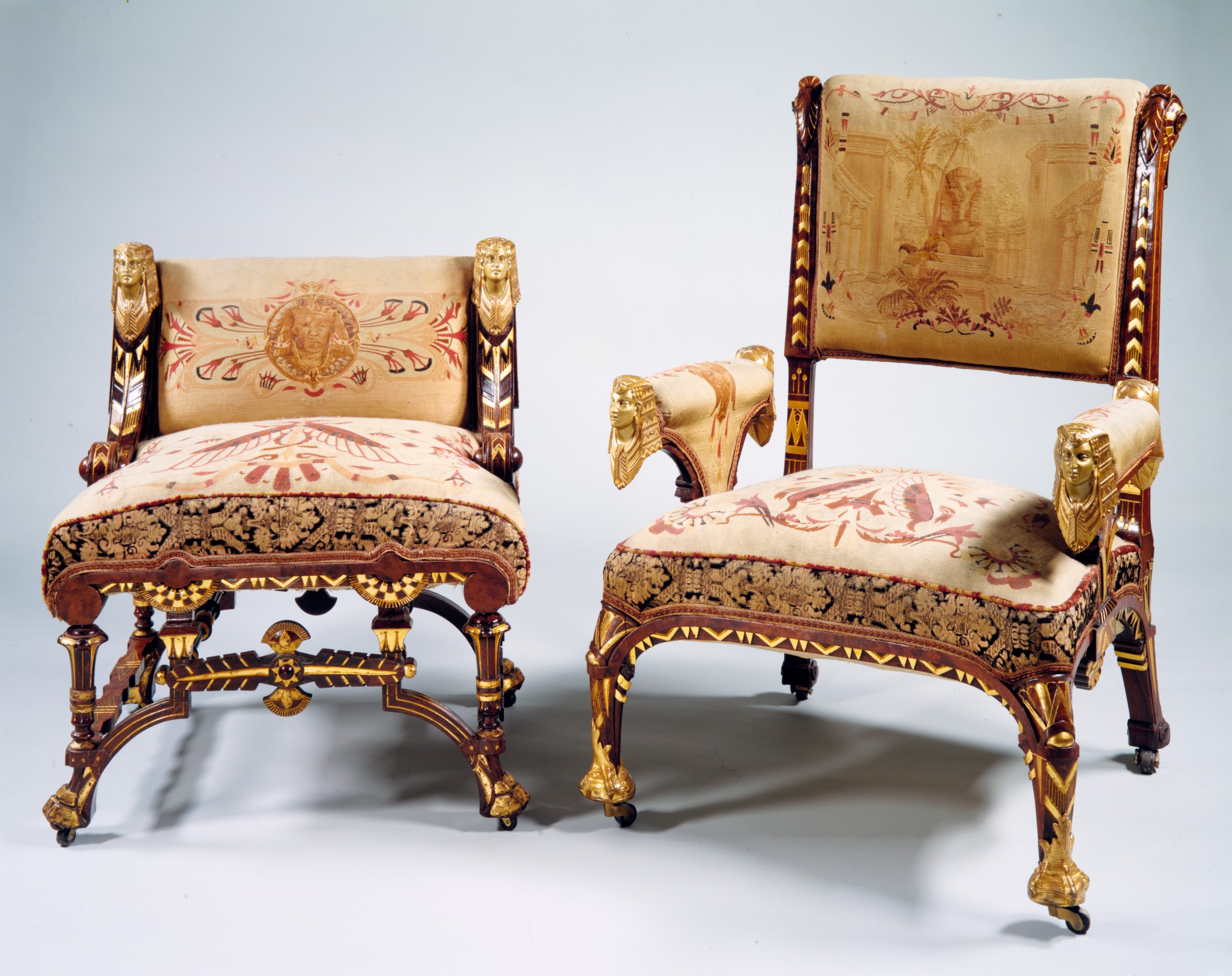Armchair
Attributed to Pottier and Stymus Manufacturing Company
William Stymus, an American, and Auguste Pottier, a Frenchman, met as foremen at the cabinetmaking firm Rochefort and Skarren. Pottier trained as a sculptor in Paris, while Stymus had a background in upholstery. The scope of their partnership extended beyond furniture making to include antique dealing and interior decoration. The brass mounts on this chair likely were created in the furnace at their six-story factory. They also produced tapestry and embroidery, although the finely woven Aubusson upholstery on this chair, faded from its original brilliant turquoise to a tan, probably was imported from France by a representative of the firm based in Paris to procure the "latest novelties."
While a number of New York cabinetmakers produced Egyptian revival furniture with motifs such as sphinx heads, animal feet, palmettes, and lotus leaves during the 1870s, the firm of Pottier and Stymus is most often associated with the style. This armchair and a matching side chair (1970.35.2) are not marked or labeled, but the attribution to Pottier and Stymus is supported by the cabinetmaker Ernest Hagen's description of their work "with brass gilt sphinx heads on the sofas and armchairs, gilt engraved lines all over with porcailaine [sic] painted medallions on the backs, and brass gilt bead moldings nailed on." These chairs were probably part of a larger suite; a matching armchair is owned by the Art Institute of Chicago and another matching side chair is in the Virginia Museum of Fine Arts. At their Lexington Ave factory, described in a French-language paper as a "wonderland," Pottier & Stymus employed carvers, brass moulders, designers, and even architects. Their many lucrative commissions included New York’s most luxurious hotels, millionaires’ mansions around the country, the White House, and even the Presidential residence at Chapultepec in Mexico City.
Due to rights restrictions, this image cannot be enlarged, viewed at full screen, or downloaded.
This artwork is meant to be viewed from right to left. Scroll left to view more.



